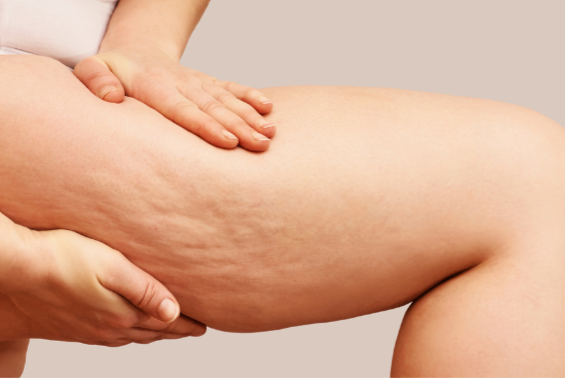
Can Light Therapy Help with Cellulite?
3 minute read
Share
What LED research shows about red and near-infrared light for skin support, circulation, and visible firmness
Light therapy has been studied for its effects on circulation, tissue health, and inflammation—but can it support areas affected by cellulite? If you're new to the topic, here’s what you need to know.
In this article, we’ll explore:
-
What cellulite is and why it forms
-
How LED light therapy works
-
What clinical research says about light therapy and cellulite
-
What kind of results are realistic
What Is Cellulite?
Cellulite is a common, harmless skin condition that results when fibrous connective tissue pulls down on the skin while fat cells push upward—causing a dimpled or uneven surface. It typically affects areas like the thighs, hips, and buttocks. Hormones, reduced collagen, circulation issues, and inflammation all contribute to its visibility.
How LED Light Therapy Works
LED light therapy uses specific wavelengths of visible and near-infrared light to stimulate cellular activity in the skin. Red light (620–700 nm) and near-infrared light (700–990 nm) reach different layers of the skin:
-
Red light (e.g. 660 nm): targets the upper dermis
-
Near-infrared light (e.g. 850 nm): reaches deeper into the dermis and subcutaneous tissue
These wavelengths are absorbed by mitochondria and can help:
-
Improve blood circulation
-
Boost collagen and elastin production
-
Reduce local inflammation
These effects are not a cure, but may help support the skin in areas with visible cellulite.
What the Research Says
🔬 LED Light and Inflammation
A 2024 randomized clinical trial using 650 nm red LED light showed that local application reduced skin temperature (a marker of inflammation) and increased pain tolerance in women with moderate to severe cellulite. The results suggest that LED therapy may help calm inflammation and improve tissue comfort. Study on PubMed
🏃 LED Plus Exercise
A 2011 study tested the effect of near-infrared LED (850 nm) paired with treadmill exercise compared to treadmill exercise alone. The group receiving LED therapy showed greater reductions in thigh circumference and more even skin temperature distribution.
While the study did not directly measure cellulite grade, these outcomes—particularly in fat reduction and improved skin circulation—are linked to factors that influence the visibility of cellulite. This suggests that LED light enhances the benefits of exercise when targeting areas prone to cellulite. Study on PubMed
So—Can LED Light Therapy Help?
Yes—LED light therapy can support the skin in areas affected by cellulite.
It will not eliminate cellulite, but clinical research suggests that consistent use of red and near-infrared light may:
-
Improve skin firmness and tone
-
Reduce inflammation and tenderness
-
Support healthy blood circulation
For best results, LED therapy is often combined with movement or massage. Device quality (intensity in mW/cm² and correct wavelengths) and consistent use are key.
Overview
Red and near-infrared LED light therapy may help support skin affected by cellulite by improving circulation, reducing inflammation, and promoting tissue resilience. Research suggests it’s a safe, low-risk method to include in a broader routine.
Note: All studies referenced use non-laser, low-level LED therapy. These findings do not apply to laser or ablative devices.



